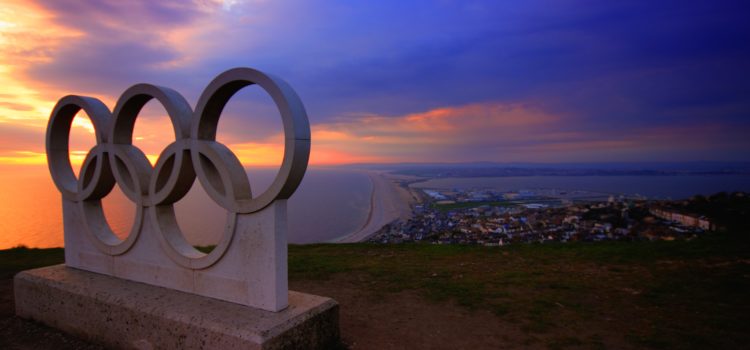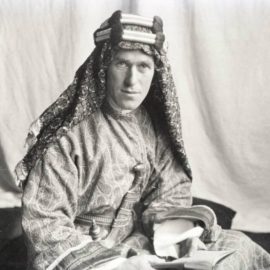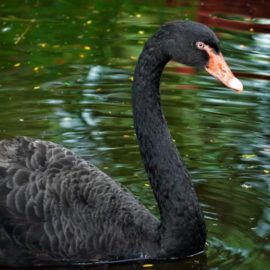

This article is an excerpt from the Shortform summary of "Unbroken" by Laura Hillenbrand. Shortform has the world's best summaries of books you should be reading.
Like this article? Sign up for a free trial here .
What was Louis Zamperini’s Olympics career like? Was he a successful athlete?
Before being known for his time as a POW during World War II, Louis Zamperini’s Olympics dreams seemed all but guaranteed. Louis Zamperini’s Olympic future in running was bright, and he went to the 1936 Olympics in Berlin. Read more about Louis Zamperini’s Olympics career below.
Louis Zamperini’s Olympic Career
Louie’s stature as a legend was cemented his junior year at the Southern California Track and Field Championship. He set a national high school mile record that day at 4:21.3, two seconds faster than the previous record held since WWI. One report said it was unlikely his record would be broken within the next twenty years. The reporter was only off by one year.
Louie’s success made the community of Torrance change their feelings about him. Where once he was the town terror, now he was a local hero. His life became an embarrassment of riches. People lined up for autographs, and he received so many wristwatches as prizes, he started giving them away to neighbors. Girls swarmed him, and the press took photos of him and his trophies in front of his house.
Watching Louie train became a spectator sport at the track, and people started referring to him as “Iron Man” and the “Torrance Tornado.” Newspapers from all over Southern California were pumping out stories about this budding superstar, including the LA Times and Examiner.
For the boy whose only thought used to be what to steal next, Louie’s life now encompassed bigger dreams. He started to believe his legs could take him all the way to the world’s stage. He set his sights on the Berlin Olympics in 1936. Louis Zamperini’s Olympics dreams had officially begun.
Louie’s Olympic dream required an adjustment in his training. There was no mile race, only the 1500, 100 meters shorter. Many of the Olympic runners would be older, around their mid-20s, including Louie’s hero, Glenn Cunningham, who would be twenty-seven by the 1936 games. In comparison, Louie would only be nineteen.
None of these factors deterred Louie, who’d already become the best high school miler ever in America. Over the two years that Louie had been competing, he’d shaved 42 seconds off his mile time. Louie was determined to make it to Berlin, and once he completed his undefeated senior season, the experts started to think he might just do it.
After graduating from high school in 1935, scholarship offers from a multitude of top schools came flooding in. Pete had transitioned to USC on a scholarship and was making his mark as one of the best milers in the country, as well. He urged Louie to accept their offer but defer until after the Olympic trials seven months away. Louie agreed and went to live with Pete so they could continue their training partnership.
Louie was a ferocious trainer, working with Pete every day to get in shape for the 1500. But his dream ended in the spring when he realized he wasn’t improving fast enough. Louie was too young, and there was no way to make his body mature to the level of his competition. He was crushed.
A Young Man’s Resilience
Louie’s confidence and brashness in the face of obstacles as a child would come to be his saving grace after losing his dream of racing in the 1500 in Berlin. Louie saw an article about an upcoming meet at the Los Angeles Coliseum. A twenty-six-year-old schoolteacher, Norman Bright, was touted as one of the favorites in the 5,000 meters race. Bright had the second-best time behind a younger racer from Indiana named Don Lash.
Louie learned that three 5,000-meter runners would go to the Olympics. Pete pushed him to enter the race, despite its extended distance of just over three miles. If Louie could keep up with Bright, he’d have a shot at making the team. With only two weeks until the meet and having never run farther than a mile twice in high school, Louie knew it was a long shot. But Louie was nothing if not a fighter. He trained so intensely, he lost the skin off one of his toes.
Louie would learn just what he was made of during that race. In front of 10,000 fans, Bright and Louie ran neck and neck the whole way. Although Bright finished a heartbeat ahead of Louie, both their times were faster than the previous record of that year.
With Louis Zamperini’s Olympic dream suddenly a reality again, Louie strived for greatness at this new distance. He succeeded at his second qualifier in June 1936, clocking the third-fastest time in the country. Louie was invited to the Olympic trials in New York.
From Big Fish to Small Fish
The residents of Torrance felt Louis Zamperini’s Olympic dream like it was their own, and they helped procure everything he needed to travel to the big city. They even had “Torrance Tornado” put on his new suitcase.
New York was having a record-breaking summer, and temperatures were excruciating. Three thousand people died across the country as a result of a three-day heat wave. In Manhattan, where the temperature reached up to 106 degrees, forty people died.
These were the conditions of the Olympic trials. There was no way to avoid the heat while Louie and the other runners trained day in and out. Overheated, dehydrated, and unable to rest or eat, many of the racers dropped significant amounts of weight, ten pounds or more, even Louie.
Louie also struggled with the difference in his stature in New York. The papers focused on Lash as the favorite. Louie was intimidated but positive he would at least be in the top three. He spent a sleepless night before the race, praying he wouldn’t disappoint everyone from home.
The conditions on the day of the race were dangerous. The temperature was at least 100 degrees. Racers were passing out and being taken to the hospital. There was no shade, and by the time Louie’s race was called, he’d been sitting in the scorching sun for hours.
Louie let Lash take the early lead and hung back in the middle biding his time. Racers were dropping on the track from the heat, and Louie’s feet were burning through his shoes. On the final lap, Louie kicked up his pace. Lash was still out front, and Louie pulled closer and closer down the backstretch to within yards of Lash. When they approached the final turn, he threw everything he had at the track and pulled up side by side with Lash. Exhausted and overheated, Louie and Lash flung their bodies over the line. It was a photo finish.
At home in Torrance, Louie’s house was filled with neighbors listening to the race on the radio.
Family and friends celebrated with shouts of joy, people rushing in, cars honking in the streets. Louise cried tears of joy, and Anthony passed out wine for toasts. Even though the judges had given the win to Lash, the community was overjoyed—Louie was going to the Olympics.
Louie’s placement on the Olympic team was historic. He became the youngest runner to represent the United States at the Olympics in the nation’s history.
A Journey Like No Other
The journey for Louie and his fellow U.S. Olympians was anything but luxurious on the impressive steamer, the Manhattan. Although massive, there was no training space for the various athletes, and any spaces found were challenged by the constant rocking of the ship against the waves of the Atlantic.
The saving grace aboard ship were the elaborate meals served. There were pastries in the morning, steak and eggs for breakfast, coffee, tea, lunch in the afternoon, and great dinners in the evenings.
Many of the other athletes were from communities afflicted by the Depression, and they gorged happily. But there were consequences. By the time the ship reached Germany, many had gained weight, including a javelin thrower who gained eight pounds over the journey. Others no longer qualified in their events because of specific weight classes, and a few were too out of shape to compete.
Making His Mark
The Manhattan docked in Germany on July 24, and the athletes walked off into a country on the dawn of one of the worst tragedies in history. Of course, at the time, no one could have known what was waiting on the other side of the Olympics.
Despite his confidence, Louie knew he was no real match for the strong competition in his event. The 5,000-meter race had been dominated by the Finns in the last four Olympics. Louie was young, unseasoned, out of practice, and overweight. He barely made fifth in his heat, just barely squeaking through to the final. He would need to improve his condition during the three days until the main event.
On the day of the race, Louie gathered at the starting line filled with fear. There were one hundred thousand people in attendance. His nervous energy almost caused him to start out too strong, but he pulled back, like he had at the trials, and paced himself with the middle of the pack. Lash and the Finns separated themselves as the early leaders.
Louie’s race did not go as planned. He became nauseous during the race because of a strong stench coming from one of the racer’s hair in front of him. To get away from it, he slowed and slipped back, but he couldn’t find his juice, not even when he felt it was time to start moving up. He slid into twelfth place.
As the race neared the end, Louie remembered something Pete had told him: “A lifetime of glory is worth a moment of pain.” Louie started to accelerate, digging deep into the track and himself. He took over many of the runners ahead of him and pushed himself over the line. He finished seventh but had run the race of his life.
Despite missing the podium, Louie’s race was considered an astonishment by everyone in attendance. He’d devoured 50 lost yards in the final 400 meters and shaved eight seconds off his previous personal best. He’d run the fastest 5,000 of any American that year and was 12 seconds faster than the best time set by Lash the year before.
Another astonishing aspect of Louie’s race was that his final lap was the fastest final lap in a distance race in the history of the Olympics. It was rare for someone to run a final lap in any distance race in less than a minute. Even in the mile, the three fastest recorded final laps were 61.2, 59.1, and 58.9 seconds. Louie’s final lap was 56 seconds. Louis Zamperini’s Olympic career was defined by this record breaking final lap.
Once Louie was cleaned up and in the stands, one of Hitler’s ministers informed Louie that Hitler wanted to meet him. From his seat, perched high above the stands, Hitler reached down to shake Louie’s hand and said, “Ah, you’re the boy with the fast finish.”
The Party is Over
When Louie and the other athletes were brought through Berlin to the opening ceremonies, they saw for the first time the influence of the Nazis. Flags and banners were everywhere. Men and children lined up in uniform. Military units conducted drills in the streets.
There was a conspicuous absence of Jews and Gypsies, and all over the city, Jewish businesses sat destroyed. The Berlin games were crafted around German superiority, with Adolf Hitler at the helm. National anthems for all other countries were truncated. And whenever Hitler entered the stadium, he was greeted with uproarious applause and Nazi salutes.
A few days after Louie and his trackmates left the village on August 11, the Olympics ended and Hitler reaped the accolades. The end of the Olympics was the beginning of the Nazi’s master plan. Within days of the closing ceremonies, Berlin was covered in anti-semitic propaganda and “No Jews Allowed” posters on public establishments. Soon, the Olympic village was turned into military barracks. In a small town 20 miles away, the first group of Jews were being delivered to the Sachsenhausen concentration camp.
Before anyone overseas got wind of Hitler’s plan, Louie arrived back home. Four thousand people threw him a welcome home party in Torrance, and he was seated on a throne in the back of a truck and paraded through town. A marching band played, first-responder vehicles turned on their sirens, and factories blew their whistles.
Louie took all the attention in stride, but inside, he was disappointed in how slowly he’d run. Louie wasn’t home long before he and Pete were back to scheming. They believed he could win gold in the 1500 at the next Olympics. Louie set his sights on the 1940 summer games in Tokyo.
Louis Zamperini’s Olympics dreams were cut short by the war. But that didn’t stop him from taking the fierce determination he got from training into all other aspects of his life. Louis Zamperini’s Olympics training prepared him for more than just running.

———End of Preview———
Like what you just read? Read the rest of the world's best summary of Laura Hillenbrand's "Unbroken" at Shortform .
Here's what you'll find in our full Unbroken summary :
- How Louie Zamperini was on track to become an Olympic athlete until the war started
- The unbelievable story of his capture as a prisoner of war
- The ultimate fate of Louie and his captors






